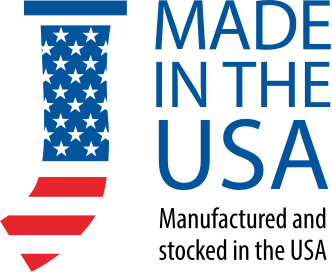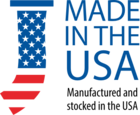
Before we get into a debate on the types of laminating processes available, the following is a brief refresher course on how to accurately define industrial laminating: It is the process where two or more substrates are desired to become joined together through the manipulation and molding of a bonding agent. The substrates can be made of any of a number of types of films, different types of papers, and even aluminum foils. Most commonly, when lamination is performed, the adhering property is applied to the less absorbent of the two, or more, substrates. Once applied, the other substrate, or substrates, are pressed against the substrate with the already applied adhesive in order to produce a layered laminate, covered on all sides.
A very popular lamination process is known as web laminating, which is used to improve the overall appearance and protective properties of the substrates involved in the process. The web laminating process can be broken down into multiple lamination options, and is mostly dictated by the way the substrate will be used after lamination occurs. For example, for packaging industries, such as the food industry, several different technologies are available that cover a wide variety of applications. The same rings true for a completely different industry – the tech world. The manufacturing of technical laminates is possible for solar energy products, technologies, and devices, as well as for insulation panel sectors.
Lamination also exists for machinery. The laminating of machinery is classified according to the kind of bonding agent that is required to produce the needed laminate. These types of laminate that can be used for this kind of process are:
Wet lamination – the bonding agent remains in a liquid state when the substrates are joined. Wet lamination is most often used to create a paper and/or aluminum foil laminate most commonly used for packaging, where the materials need to be flexible.
Dry lamination – the bonding agent, having been dissolved into a watery, a liquid, or solvency, is applied onto one of the substrates. It is then placed into a drying oven so that what remains of the bonding agent evaporates. Finally, the coated substrate with the applied adhesive is laminated onto the other substrate through the application of heavy pressure, along with the use of heated rollers, which will dramatically improve the bond strength of the laminate.
Wax lamination – the bonding agent is either a waxy substance, or perhaps a hot melt, and in this molten state is applied one of the substrates. Think of the paper and aluminum foil people used when baking certain types of foods.
Solventless lamination – No solvent is used in any process of creating the adhesive substance. The process of using a solventless adhesive would involve two or more substrates reacting with one another during the lamination process, and not requiring and kind of drying component. The resulting laminated web is then rewound into a finished roll.
 Before we get into a debate on the types of laminating processes available, the following is a brief refresher course on how to accurately define industrial laminating: It is the process where two or more substrates are desired to become joined together through the manipulation and molding of a bonding agent. The substrates can be made of any of a number of types of films, different types of papers, and even aluminum foils. Most commonly, when lamination is performed, the adhering property is applied to the less absorbent of the two, or more, substrates. Once applied, the other substrate, or substrates, are pressed against the substrate with the already applied adhesive in order to produce a layered laminate, covered on all sides.
A very popular lamination process is known as web laminating, which is used to improve the overall appearance and protective properties of the substrates involved in the process. The web laminating process can be broken down into multiple lamination options, and is mostly dictated by the way the substrate will be used after lamination occurs. For example, for packaging industries, such as the food industry, several different technologies are available that cover a wide variety of applications. The same rings true for a completely different industry – the tech world. The manufacturing of technical laminates is possible for solar energy products, technologies, and devices, as well as for insulation panel sectors.
Lamination also exists for machinery. The laminating of machinery is classified according to the kind of bonding agent that is required to produce the needed laminate. These types of laminate that can be used for this kind of process are:
Wet lamination – the bonding agent remains in a liquid state when the substrates are joined. Wet lamination is most often used to create a paper and/or aluminum foil laminate most commonly used for packaging, where the materials need to be flexible.
Dry lamination – the bonding agent, having been dissolved into a watery, a liquid, or solvency, is applied onto one of the substrates. It is then placed into a drying oven so that what remains of the bonding agent evaporates. Finally, the coated substrate with the applied adhesive is laminated onto the other substrate through the application of heavy pressure, along with the use of heated rollers, which will dramatically improve the bond strength of the laminate.
Wax lamination – the bonding agent is either a waxy substance, or perhaps a hot melt, and in this molten state is applied one of the substrates. Think of the paper and aluminum foil people used when baking certain types of foods.
Solventless lamination – No solvent is used in any process of creating the adhesive substance. The process of using a solventless adhesive would involve two or more substrates reacting with one another during the lamination process, and not requiring and kind of drying component. The resulting laminated web is then rewound into a finished roll.
Before we get into a debate on the types of laminating processes available, the following is a brief refresher course on how to accurately define industrial laminating: It is the process where two or more substrates are desired to become joined together through the manipulation and molding of a bonding agent. The substrates can be made of any of a number of types of films, different types of papers, and even aluminum foils. Most commonly, when lamination is performed, the adhering property is applied to the less absorbent of the two, or more, substrates. Once applied, the other substrate, or substrates, are pressed against the substrate with the already applied adhesive in order to produce a layered laminate, covered on all sides.
A very popular lamination process is known as web laminating, which is used to improve the overall appearance and protective properties of the substrates involved in the process. The web laminating process can be broken down into multiple lamination options, and is mostly dictated by the way the substrate will be used after lamination occurs. For example, for packaging industries, such as the food industry, several different technologies are available that cover a wide variety of applications. The same rings true for a completely different industry – the tech world. The manufacturing of technical laminates is possible for solar energy products, technologies, and devices, as well as for insulation panel sectors.
Lamination also exists for machinery. The laminating of machinery is classified according to the kind of bonding agent that is required to produce the needed laminate. These types of laminate that can be used for this kind of process are:
Wet lamination – the bonding agent remains in a liquid state when the substrates are joined. Wet lamination is most often used to create a paper and/or aluminum foil laminate most commonly used for packaging, where the materials need to be flexible.
Dry lamination – the bonding agent, having been dissolved into a watery, a liquid, or solvency, is applied onto one of the substrates. It is then placed into a drying oven so that what remains of the bonding agent evaporates. Finally, the coated substrate with the applied adhesive is laminated onto the other substrate through the application of heavy pressure, along with the use of heated rollers, which will dramatically improve the bond strength of the laminate.
Wax lamination – the bonding agent is either a waxy substance, or perhaps a hot melt, and in this molten state is applied one of the substrates. Think of the paper and aluminum foil people used when baking certain types of foods.
Solventless lamination – No solvent is used in any process of creating the adhesive substance. The process of using a solventless adhesive would involve two or more substrates reacting with one another during the lamination process, and not requiring and kind of drying component. The resulting laminated web is then rewound into a finished roll.


















